#4: Hidden from view
18 November 2015
With only fourteen days to go until the launch of LISA Pathfinder on 2 December, preparations continue according to plan, and this week has seen another two major milestones passed: fitting the launch vehicle adapter to the spacecraft, and enclosing the spacecraft in the fairing.Since arriving at the European Spaceport in Kourou, French Guiana, on 8 October, the LISA Pathfinder spacecraft has been tested and prepared to ensure that it is ready to be launched.
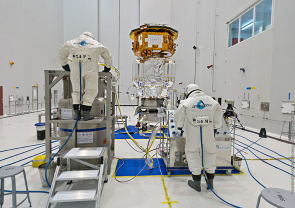 |
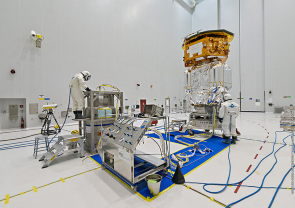 |
| LISA Pathfinder being prepared for fuelling. Credit: ESA-CNES-Arianespace / Optique Vidéo du CSG - P. Baudon | |
Following the completion last week of fueling of the propellant tanks, this week saw the launch composite module (LCM) - the combined spacecraft and propulsion modules - undergoing the final preparations for the launch. This started with the LCM being removed from its integration jig, and being fitted to the Payload Adaptor of the Vega rocket. The next time the LCM separates from this adaptor LISA Pathfinder will be about 200km above the Earth's surface, having just completed its first orbit of the Earth.
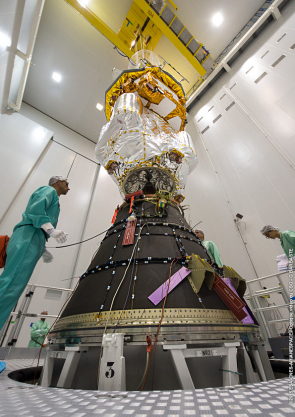 |
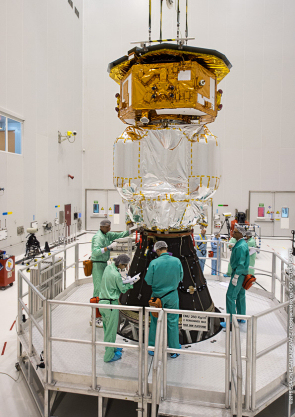 |
| LISA Pathfinder being integrated to the Vega launcher's Payload Adaptor. Credit: ESA-CNES-Arianespace / Optique Vidéo du CSG - G. Barbaste | |
When the LCM was secured on the payload adaptor, all the non-flight items - the so called Red Tag Items - that were still on the satellite had to be removed. These are coloured red so that they are easier to spot on the spacecraft, reducing the chance that we miss one! Examples of Red Tag Items are: the covers that protect the thruster nozzles, and the safety pins that prevent unwanted firing of the pyrotechnic release mechanisms.
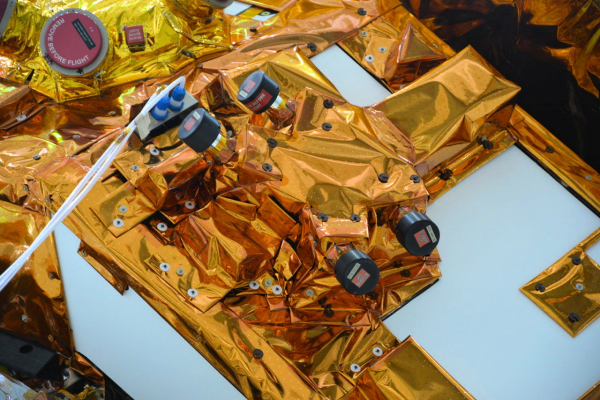 |
| Examples of red tag items covering the micro-newton thrusters' nozzles. Credit: ESA |
With the launch composite in its flight configuration, the next step was to enclose it in the rocket's payload shroud, also known as the fairing. The fairing protects the satellite as it accelerates up through the atmosphere of the Earth. If you have seen the Hollywood movie, The Martian, you'll know that the fairing is crucial in protecting the inside of the payload bay, and ensuring the rocket reaches its intended orbit… especially travelling at high velocity through Earth's thick atmosphere.
However, when LISA Pathfinder has passed through the atmosphere, the fairing becomes a hindrance, as it means carrying more mass than necessary into orbit. So, only 3 minutes 54 seconds after launch, the two 'clam shells' of the fairing separate and are jettisoned from the launcher. The two halves then burn up as they hurtle through the atmosphere on their final journey back towards Earth.
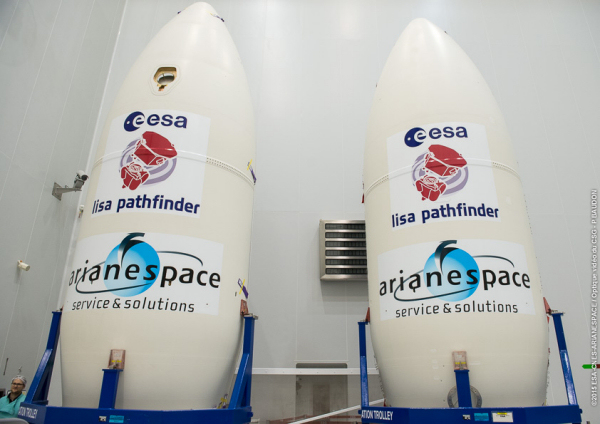 |
| The two halves of the LISA Pathfinder fairing. Credit: ESA-CNES-Arianespace / Optique Vidéo du CSG - P. baudon |
Back to this week: with LISA Pathfinder now enclosed in the fairing and hidden from our view, the team had one final activity before we wave our baby off on its journey to the launch pad: the signing of the fairing sticker. The whole team present at the launch site had the opportunity to sign our names on the side of the fairing, wishing LISA Pathfinder Godspeed on her voyage to space.
Paul McNamara
17 November 2015
Kourou, French Guiana






